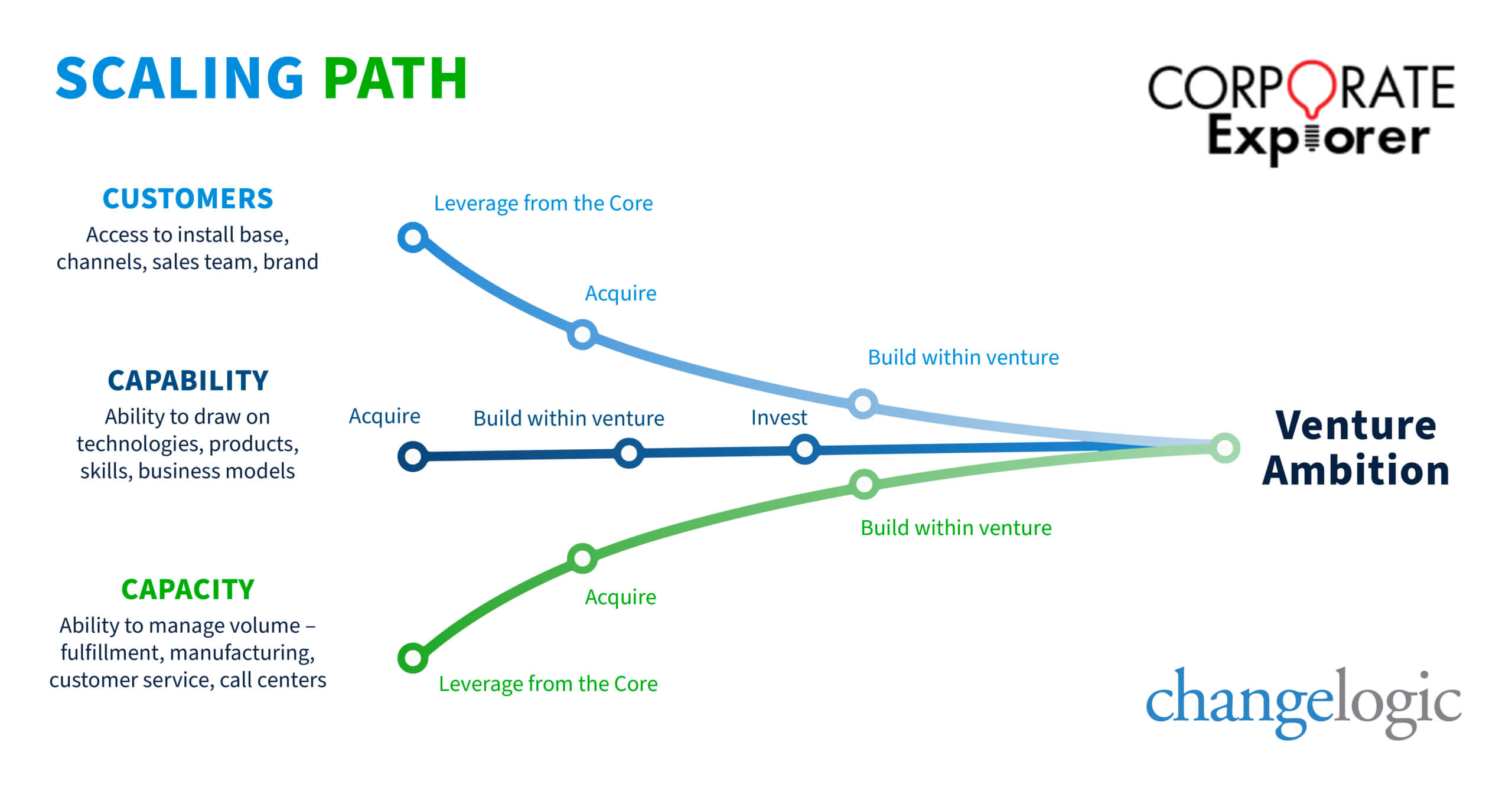In today’s rapidly changing business environment, innovation is more critical than ever before. Corporations that can successfully innovate are better positioned to compete and win in the marketplace. However, innovation is not easy. It requires a significant investment of time, money, and resources.
One of the biggest challenges facing corporations is scaling their innovations. Scaling is the process of taking an innovation from a small, experimental stage to a large-scale, profitable business. It is a complex and challenging process and a point where many corporations fail to scale their innovations successfully.
I am often asked, ‘how can corporates scale innovation?’. My answer in Corporate Explorer was – build a scaling path to assemble the customers, capabilities, and capacity to scale.
My colleague, Christine Griffin, and I wrote an article about the discipline of scaling and its critical importance which is now available in the MIT Sloan Management Review.
The importance of scaling

There are three key disciplines of innovation: ideation, incubation, and scaling. Ideation is the process of generating new ideas. Incubation is the process of developing and testing those ideas.
Scaling is the third and final discipline of innovation, but it is arguably the most important. This is because it is where ideas convert into value. Without scaling, innovations remain just that: ideas. They do not generate revenue, they do not create jobs, and they do not help corporations compete.
The challenges of scaling
There are a number of challenges that corporations face when scaling their innovations. These challenges include:
- Lack of resources: Scaling an innovation requires a significant investment of time, money, and resources. Many corporations do not have the resources to scale their innovations successfully.
- Lack of expertise: Scaling an innovation requires a different set of skills and expertise than ideation and incubation. Many corporations do not have the expertise to scale their innovations successfully.
- Lack of culture: A culture that is supportive of innovation is essential for scaling innovations successfully. Many corporations do not have a culture that is supportive of innovation.
Read more: Six Breakdowns in the Process for Disruptive Innovation
The importance of a scaling path
A scaling path is a roadmap for taking an innovation from a small, experimental stage to a large-scale, profitable business. A well-defined scaling path can help new business ventures overcome the challenges of scaling and increase their chances of success.
The elements of a scaling path
As discussed in my book, Corporate Explorer: How Corporations Beat Startups at the Innovation Game, you need to assemble the assets, or the pieces that will enable you to achieve the goal of scaling the new venture. The three types of assets needed are:
- Customers: Access to channels, customer base, sales teams, etc. that provide the market reach needed to drive revenue.
- Organizational Capability: The technologies, products, skills and the business models needed to deliver on the value proposition.
- Organizational Capacity: Ability to manage a business operating at increasing volumes, which could mean fulfillment, logistics, manufacturing, customer service, call centers, etc.
There are four options for where these assets could come from, including building them from scratch in-house, buying the capabilities from another existing company, leveraging the assets of the core business, or partnering with other companies.
Once these assets are in place, a Corporate Explorer can map their scaling path- a deliberate sequencing of steps from an incubated new venture to a fully operational revenue-generating business. A scaling path typically includes:
- Mapping out what assets you can leverage from the core business
- An experimentation plan
- Preparation for what’s to come, or, planning for future support

In our article, we offer five key lessons for building a scaling path to scale new corporate ventures, using the amazing work of Deborah DiSanzo at Best Buy Health as our exemplar.
Theirs is exactly the sort of story that people tell me cannot happen: Best Buy, the US electronics retailer, has assembled the assets to compete in the home healthcare market, scaling Best Buy Health into a unit with 1000 employees and over half a billion dollars in revenue. A perfect example of a large corporation innovating to create a new business leveraging assets from the core, as well as acquisitions and what they build as a team. These are high-class achievements, but ones that others can replicate.
In the article we also use examples from other firms in our research to support our findings and introduce some lessons from unsuccessful scaling, often relying on anonymous cases from our research or client service experience.
